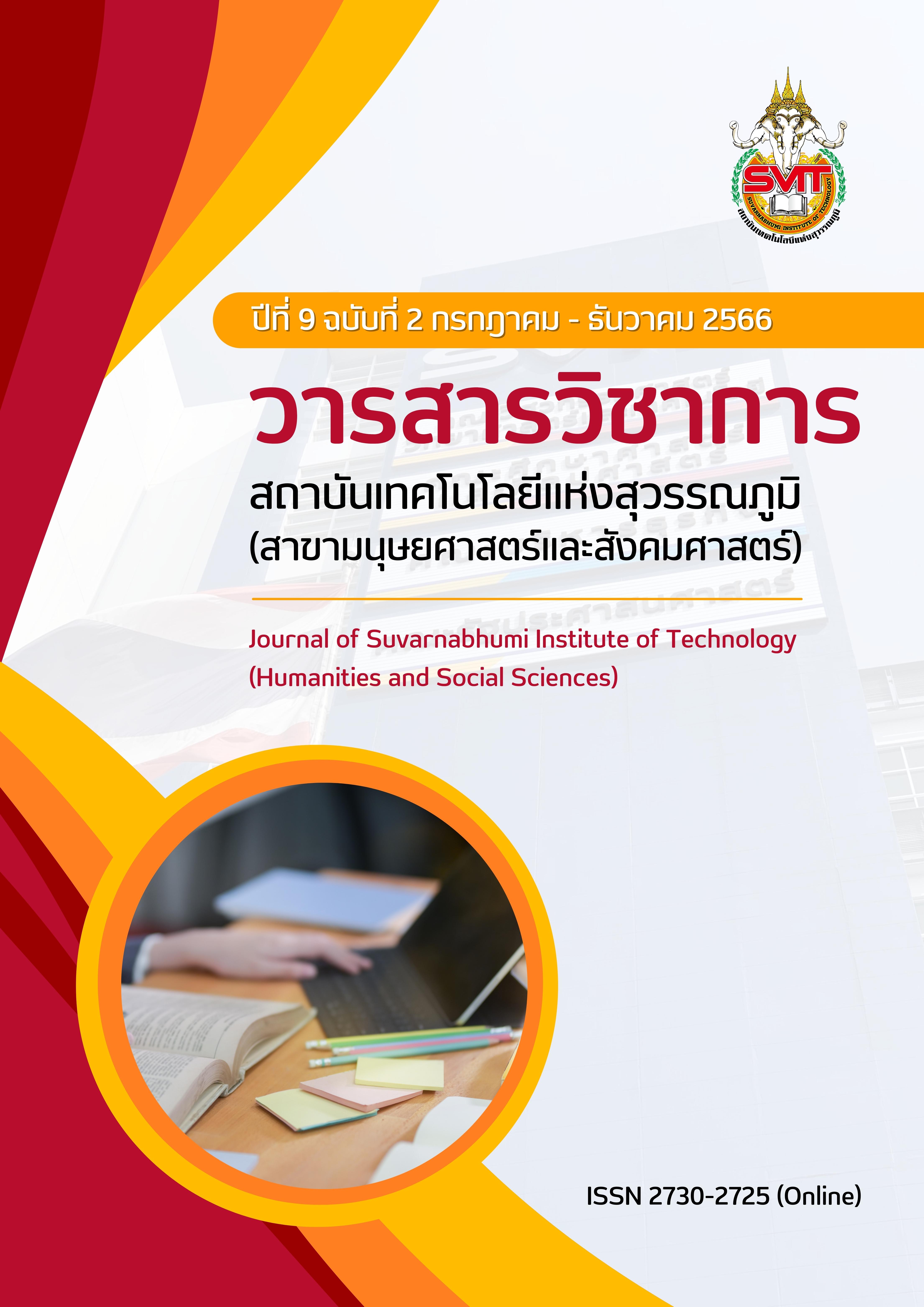DEVELOPMENT OF A RESEARCH CONCEPTUAL MODEL ON RETAINING ASEAN MIGRANT LABOR (FROM MYANMAR CAMBODIA AND LAOS) AFTER THE CORONAVIRUS PANDEMIC
Keywords:
Retaining Migrant Labor, RetJob Satisfaction, Retention in EnterprisesAbstract
This article paper is aimed to review the literature about retaining ASEAN migrant labor after the Coronavirus Pandemic (COVID-19) which appeared in retaining migrant labor research and academic papers. After reviewing the literature, a development conceptual model will be applied in collecting data on enterprises that hire ASEAN migrant labor (from Myanmar Cambodia and Laos) in Thailand. The result of the literature reviewed shows the research conceptual model in retaining ASEAN migrant labor comprised of recruitment and selection labor, training in teamwork skills, maintaining occupational health and safety, improving the quality of work life for labor, managing payment and welfare programs and motivating morale and encouragement at work. These six factors were expected to correlate with job satisfaction and retention probability of labor in enterprises. Lastly, this research conceptual model will be arranged for research methodology design and collection of data in the next steps.
References
กลุ่มนายจ้างที่ใช้แรงงานต่างด้าว : โครงการนายจ้างสีขาว. (18 กรกฎาคม 2563). เงื่อนไขเปิดนำเข้า MOU.เรียกใช้เมื่อ 20 กันยายน 2564 จาก กลุ่มนายจ้างที่ใช้แรงงานต่างด้าว: โครงการนายจ้างสีขาว. สืบค้นจาก https://www.facebook.com/GEFW2020
ประชาไท. (15 กันยายน 2563). ประชาไท. สืบค้นจาก https://prachatai.com/print/87542
พูนพัฒน์ กมลวุฒิพงศ์. (2564). แรงงานข้ามชาติผิดกฏหมายกับโควิด-19 ระบาดระลอกใหม่. วารสารวิชาการอาชญาวิทยาและนิติวิทยาศาสตร์, 7(2), 181-188.
Elsafty, A. S., & Ragheb, M. (2020). The Role of Human Resource Management Towards Employees Retention During Covid-19 Pandamic in Medical Supplies Sector – Egypt. Business and Management Studies, 6(2), 50-59.
Hof, H., Pemberton, S., & Pietka-Nykaza, E. (2021). EU migrant retention and the temporalities of migrant staying : a new conceptual framework. Comparative migration studies, 9(19), 1-18. doi:org/10.1186/s40878-021-00225-5
Kamalaveni, M. S., Ramesh, S., & Vetrivel, T. (2019). A Review of Literature on Employee Retention. International Journal of Innovative Research in Management Studies, 4(4), 1-10.
Mathimaran, B. K., & Kumar, A. A. (2017). Employee Retention Strategies - An Empirical Research. Global Journal of Management and Business Research: E Marketing, 17(1), 16-22.
Pfeffer, J. (1998, winter). Seven Practices of Successful Organization. California Management Review, 40(2), 96-124.
Remya, S., & Divyarani, R. L. (2020, July 4). A study on work satisfaction of migrant labourers. Dogo rangsang research journal, 10(7), 252 - 257.
Shahid, A. (2018). Employee intention to stay: an environment based on trust and motivation. Journal of management research, 10(4), 58-71. Retrieved from doi:10.5296/jmr.v10i4.13680
Tamunomiebi, M. D., & Bassey, L. U. (2020, March). Work flexibility and employee intention to stay : examining the issues. International academy journal of business administration annals, 6(1), 15-24.
Wang, Z., & Jing, X. (2018, August). Job satisfaction among immigrant workers: a review of determinants. Social Indicators research : an international and interdisciplinary journal for quality-of-life measurement, 139(1), 381-401.
Yee, K., Peh, H. P., Tan, Y. P., Teo, I., Tan, E. U., Paul, J., . . . Tan, H. K. (2021). Stressors and coping Strategies of migrant workers diagnosed with COVID-19 in Singapore : a qualitative study. BMJ Open, 2021, 1-8. Retrieved from doi:10.1136/bmjopen-2020-045949
Downloads
Published
Issue
Section
License
Copyright (c) 2023 Suvarnabhumi Institute of Technology

This work is licensed under a Creative Commons Attribution-NonCommercial-NoDerivatives 4.0 International License.
บทความที่ได้รับการตีพิมพ์เป็นลิขสิทธิ์ของวารสารวิชาการ สถาบันเทคโนโลยีแห่งสุวรรณภูมิ
ข้อความที่ปรากฏในบทความแต่ละเรื่องในวารสารวิชาการเล่มนี้เป็นความคิดเห็นส่วนตัวของผู้เขียนแต่ละท่านไม่เกี่ยวข้องกับสถาบันเทคโนโลยีแห่งสุวรรณภูมิ และคณาจารย์ท่านอื่นๆในสถาบันฯ แต่อย่างใด ความรับผิดชอบองค์ประกอบทั้งหมดของบทความแต่ละเรื่องเป็นของผู้เขียนแต่ละท่าน หากมีความผิดพลาดใดๆ ผู้เขียนแต่ละท่านจะรับผิดชอบบทความของตนเองแต่ผู้เดียว





